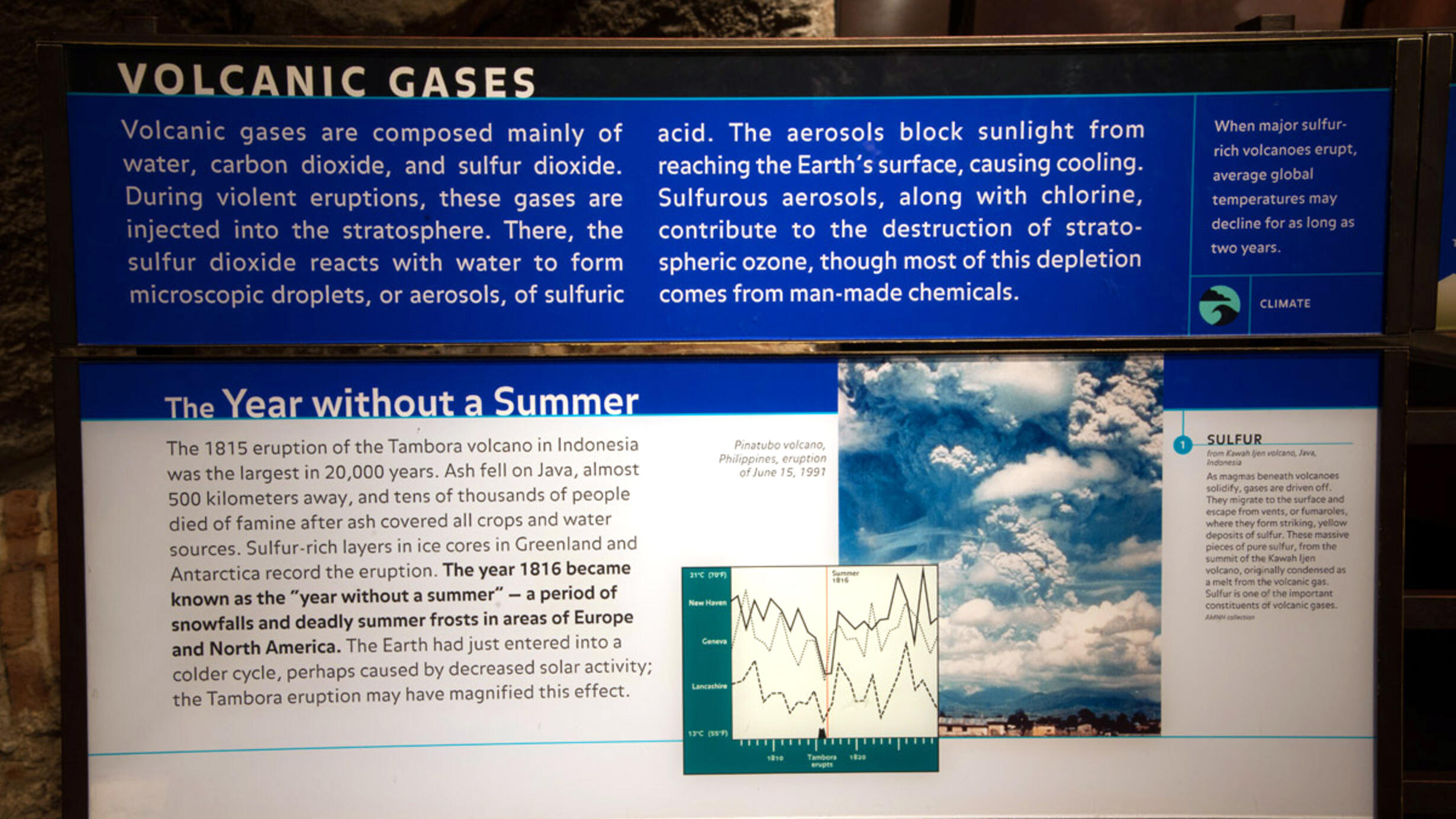The year without a summer
Part of Hall of Planet Earth.
 AMNH/R.Mickens
AMNH/R.Mickens The 1815 eruptions of the Tambora volcano in Indonesia was the largest in 20,000 years. Ash fell on Java, almost 500 kilometers away, and tens of thousands of people died of famine after ash covered all crops and water sources. Sulfur-rich layers in ice icores in Greenland and Antarctica record the eruption. The year 1816 became known as the “year without a summer”- a period of snowfalls and deadly summer frosts in areas of Europe and North America. The Earth had just entered into a colder cycle, perhaps caused by decreased solar activity; the Tambora eruption may have magnified this effect.
photo credit: Denis Finnin, © American Museum of Natural History
A view into the crater of Kawah Ijen Volcano. Note the plumes of volcanic gases and the greenish-blue color of the crater lake, the largest acid volcanic crater lake in the world.
photo credit: Denis Finnin, © American Museum of Natural History
photo credit: Denis Finnin, © American Museum of Natural History
Indonesian sulfur miners amidst the steaming sulfur vents in the crater of Kawah Ijen Volcano.
photo credit: Denis Finnin, © American Museum of Natural History
photo credit: Denis Finnin, © American Museum of Natural History